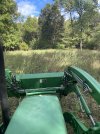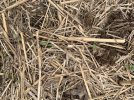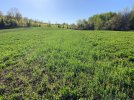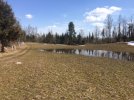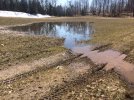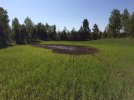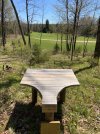Foggy47
5 year old buck +
He threw down fighting words this week.
He claimed a crimper was better than a flail mower or sickle bar mower. What's interesting, is nobody has ever mentioned a sicklebar mower on any habitat forum I've been on, until it was brought up here a week or two ago. I'm a pretty Christian fella, but you can't be trash talking the flail mowers. There wouldn't be any crimson clover standing back up if a flail mower did that job.
I have never owned a sickle bar mower.....and have nothing against them. However I have sold lots of sickle bar knives, wear bars, rivets, and wear parts....likely enough to build three Subarus. Those mowers can lay the crop down in a fair way....but that tool would be pretty low on my list of things to control rye for food plotting. My 2 cents.
I have read so many articles and watched so much video on knowledgeable folks whom claim that the roller / crimper is the superior tool for terminating rye. Why do you resist what is proven to be the best method? Some years ago sickle bar mowers were replaced by disk mowers. I would not invest in this for food plotting purposes.....just say'in. Sure, if you have one try it. Sure, you can get by with other means at times.....and I think a cultipacker could do a pretty fair job at times....as can other tools.......but if you want the best way to do this.....it appears the roller / crimper is the real deal.
Your honor.....I rest my case. Grin ;)
(OH....and I absolutely love the way RTP made an owners manual for the Goliath Crimper. I think it's the best manual I have ever received....although that product is not too complicated.).
Last edited:


